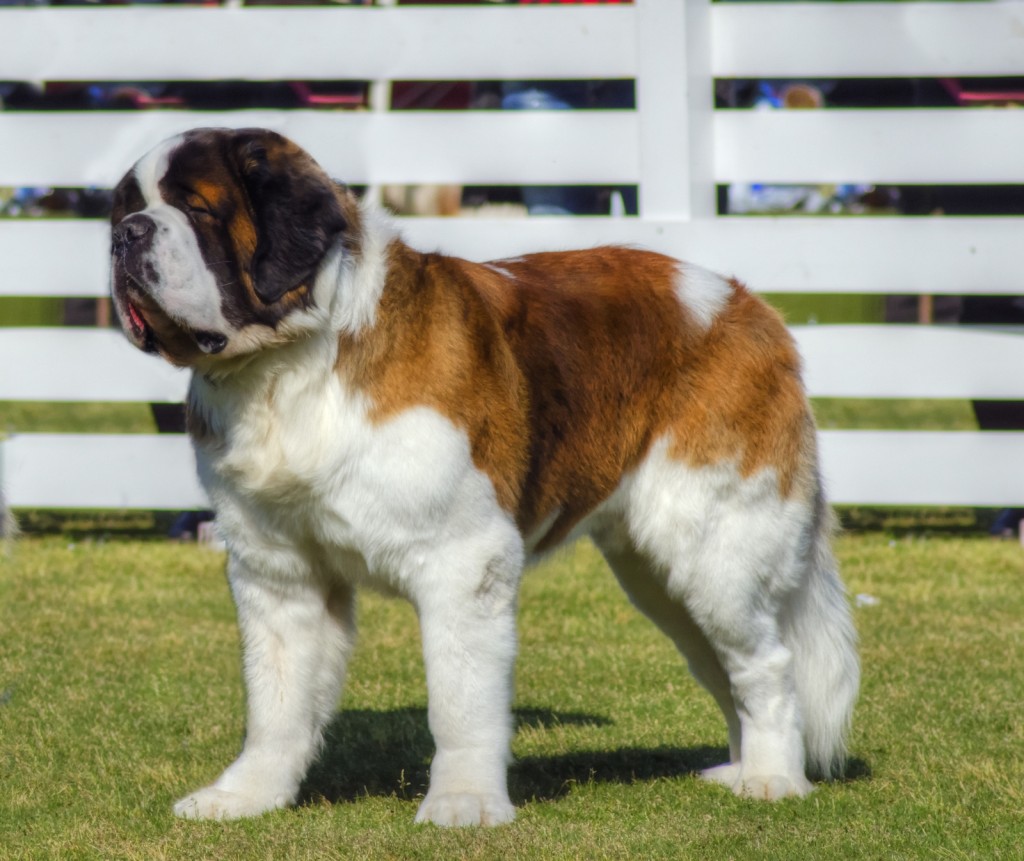Saint Bernard

Saint Bernard: The Gentle Giant of the Alpine Region
Welcome to the comprehensive guide on the Saint Bernard, a breed renowned for its immense size, gentle nature, and heroic history. This page explores the Saint Bernard, a large working dog known for its role in alpine rescue, as well as its adaptability as a loyal and loving family pet.
Overview
AKC Height: Males: 28-30″; Females: 24-26″
AKC Weight: Males: 140-180 pounds; Females: 120-140 pounds
Colors: white with red or red with white
Life Expectancy: 8-10 years
Group: Working Group
___________________________________________

Physical Characteristics
- Massive and Muscular Build: Saint Bernards are one of the largest dog breeds, known for their powerful and muscular build. They possess a commanding presence with a broad, imposing head and expressive eyes.
- Thick and Weather-Resistant Coat: They have a dense, water-resistant double coat that comes in various colors and markings, typically red with white or white with red.
Temperament and Personality
Saint Bernards are celebrated for their calm, gentle, and friendly demeanor. Despite their size, they are known to be patient and affectionate, especially with children. They are intelligent, eager to please, and display a serene and kind temperament, making them excellent family companions.
Training and Exercise Needs

- Training: They respond well to gentle and consistent training, given their eagerness to please and intelligent nature. Early socialization and obedience training are essential.
- Exercise: Moderate exercise is sufficient for Saint Bernards. Activities like leisurely walks and playtime in a secure area are ideal for keeping them physically fit.
- Mental Stimulation: Mental engagement through basic training exercises and interactive play is beneficial for their well-being.
Health and Nutrition
- Diet: A balanced diet suitable for a giant breed is crucial. Regular veterinary check-ups are important to maintain their health.
- Common Health Issues: Saint Bernards can be prone to specific health issues like hip dysplasia and epilepsy. Regular health screenings and preventive care are advisable.
Grooming and Care
- Coat Maintenance: Their thick coat requires regular grooming to prevent matting and to maintain its condition. They shed heavily, particularly during seasonal changes.
- General Care: Routine health care practices, including dental hygiene and ear cleaning, are important for their overall health.
Living with a Saint Bernard
- Family Compatibility: They are excellent with families, known for being gentle with children and other pets.
- Adaptability: While adaptable, they thrive best in homes where they have space to move comfortably.
- Companionship: Saint Bernards form deep connections with their owners and enjoy being part of the family environment.
Responsible Ownership and Adoption
- Selecting a Breeder: Choose breeders who prioritize health, temperament, and the breed standard.
- Adoption Options: Adoption from shelters or breed-specific rescues is a great way to offer a home to a Saint Bernard in need.
Conclusion: The Saint Bernard, with its impressive size, gentle nature, and rich history, is an ideal breed for those seeking a calm, affectionate, and loyal companion. Their dignified presence and protective instincts make them a beloved and respected member of many families.
Housebreaking
PUPPY HOUSEBREAKING tips: https://www.dog-breeds.net/puppy-housebreaking/
ADULT MARKING AND RETRAINING tips: https://www.dog-breeds.net/dog-housebreaking-marking-page/



